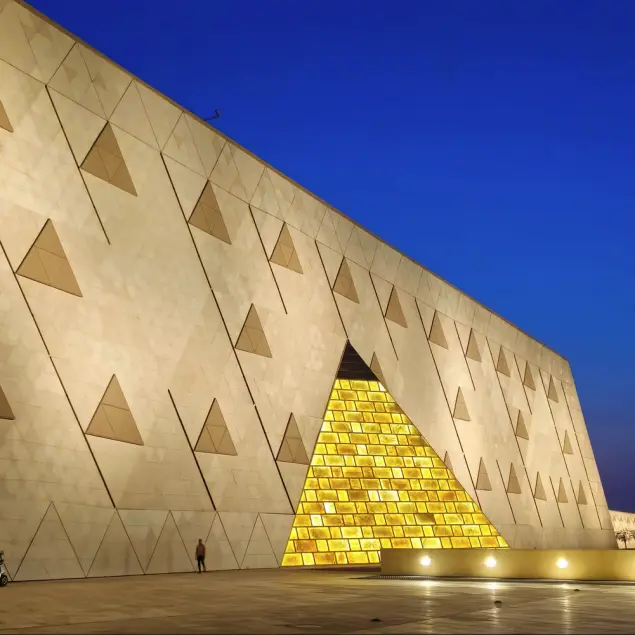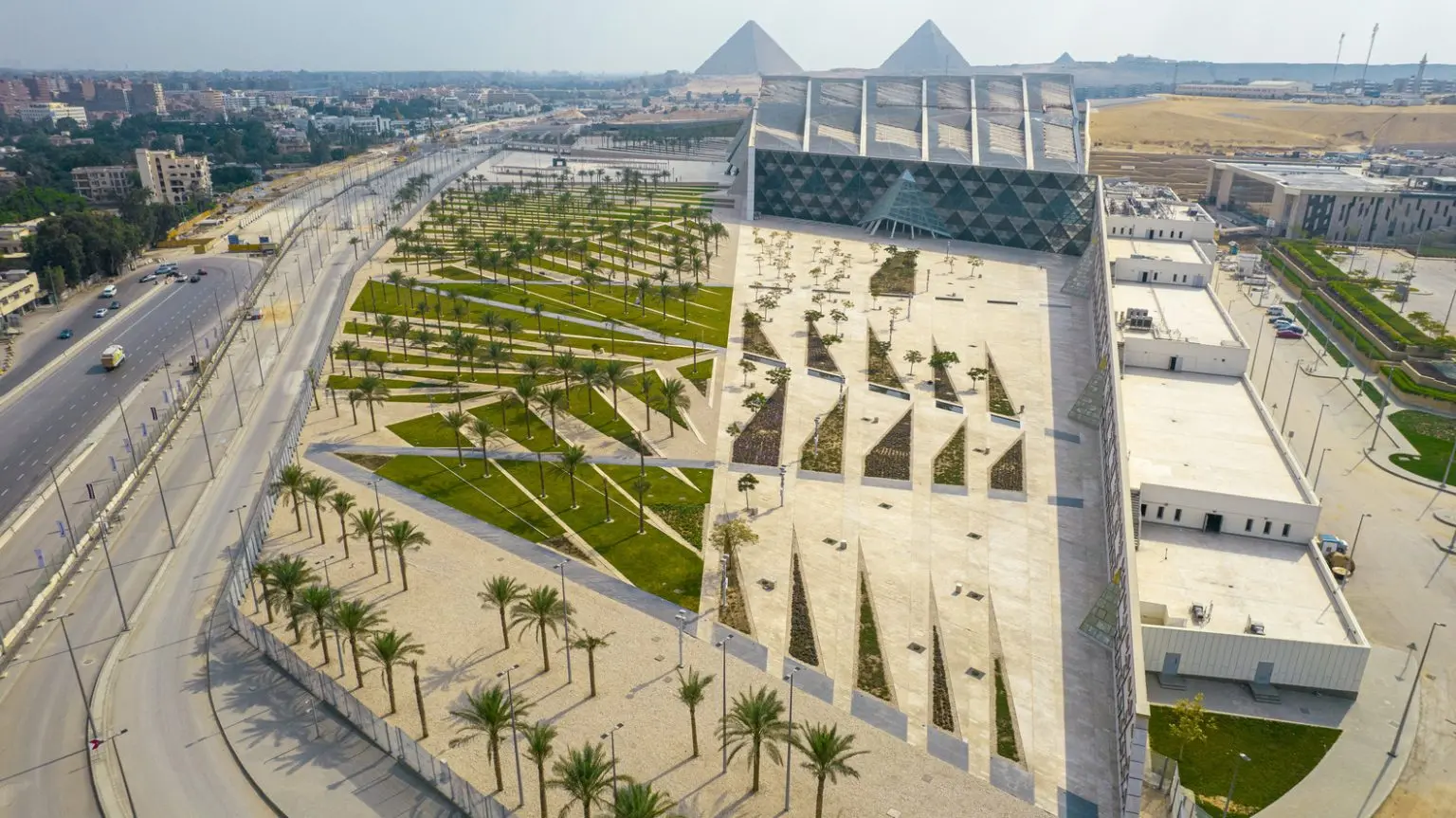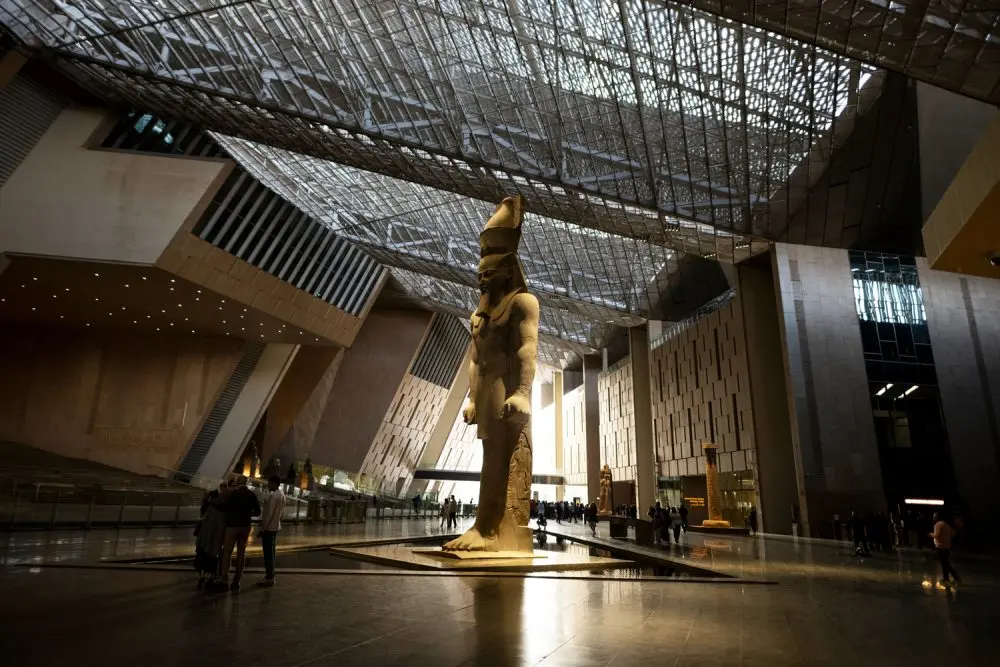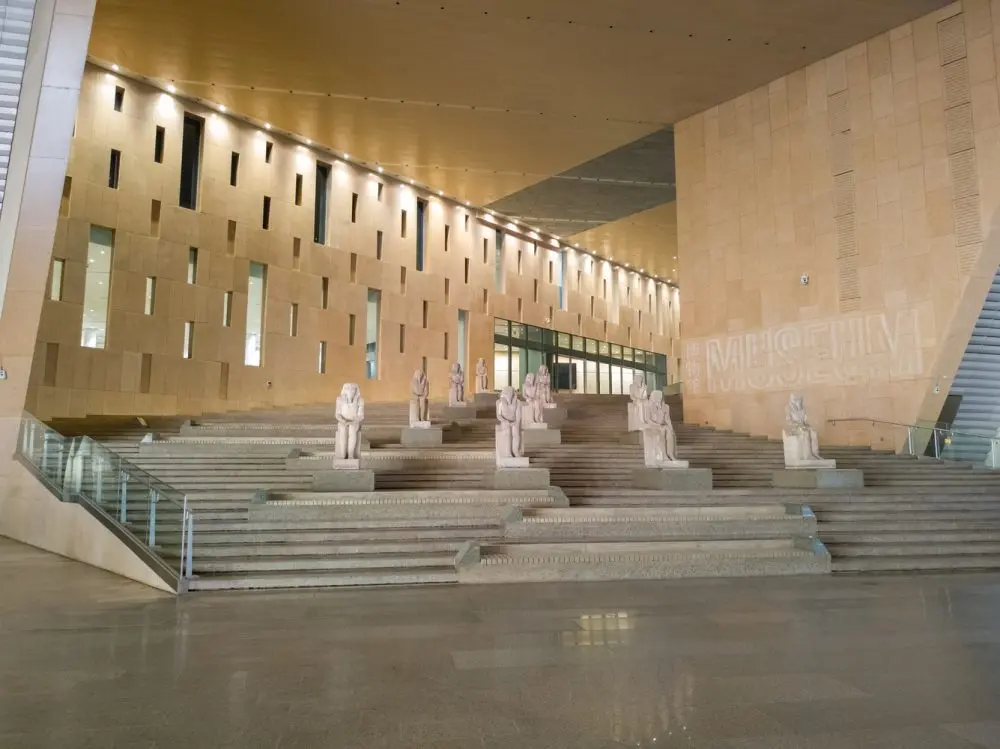The Grand Egyptian Museum (GEM), the world’s largest museum dedicated to a single civilization, officially opened its doors on November 1, showcasing nearly 50,000 artifacts in its permanent collection.
A Bridge Between the City and the Desert
Designed by Heneghan Peng Architects, the project marks the end of more than two decades of planning, collection transfers, and rescheduled openings.
Located on the edge of Cairo and the desert, the 500,000-square-meter complex was designed with a triangular layout that visually aligns with the Pyramids of Giza, creating a symbolic and physical connection between Egypt’s ancient and modern worlds.
Visitors enter through a vast glass atrium framing desert views and dominated by a colossal statue of Ramses II weighing 83 tons. From there, a grand staircase leads to the main galleries.
The Largest Tutankhamun Collection Ever Displayed
For the first time, the entire collection of Tutankhamun—over 5,000 artifacts previously scattered across Egypt—can now be seen in one place.
The museum tells the story of ancient Egyptian civilization from pre-dynastic periods to the Coptic era, across 12 permanent galleries and additional spaces for temporary exhibitions.
Beyond displaying iconic treasures—such as golden chariots, funerary masks, and the solar boat of Khufu—the museum also serves as a research, conservation, and education center, featuring laboratories open to specialists.
Architecture Serving Tourism
The opening of the GEM is a cornerstone of Egypt’s plan to double tourism by 2032, as the museum can host up to 20,000 visitors per day and integrates with broader improvements to the Giza pyramid complex.
The government has described it as the new cultural anchor of Egypt, revitalizing Cairo’s traditional tourism circuit and global image.
A Case of Urban Patience
After years of delays caused by political and financial challenges, the Grand Egyptian Museum finally redefines Giza’s cultural landscape—turning the pyramids and the museum into a single heritage panorama.
Rather than competing with the ancient monuments, the contemporary architecture frames and enhances them, standing as a model of respectful and visionary design.







